Björn Jónsson • Dec 07, 2015
Jupiter's Great Red Spot
20 years ago today, NASA's Galileo spacecraft entered orbit around Jupiter after a successful Jupiter orbit insertion burn that lasted 49 minutes.
Due to the failure of the high gain antenna (HGA) deployment, the amount of data the spacecraft returned was severely limited and many of the images exhibit 'JPEG-like' compression artifacts. Despite this, there are many gems in the Galileo imagery.
Below are three 3x2 "anniversary image mosaics" of the Great Red Spot (GRS) that Galileo obtained during its first orbit of Jupiter on June 26, 1996. They are based on data obtained through two filters, a 756 nm near infrared filter and a violet filter. In these images, color and contrast have been exaggerated to enhance the visibility of various features and the images have been processed with an unsharp mask to more clearly show small scale features. The images show the GRS from the spacecraft's vantage point, i.e. they are not map projected. The viewing geometry is also shown.
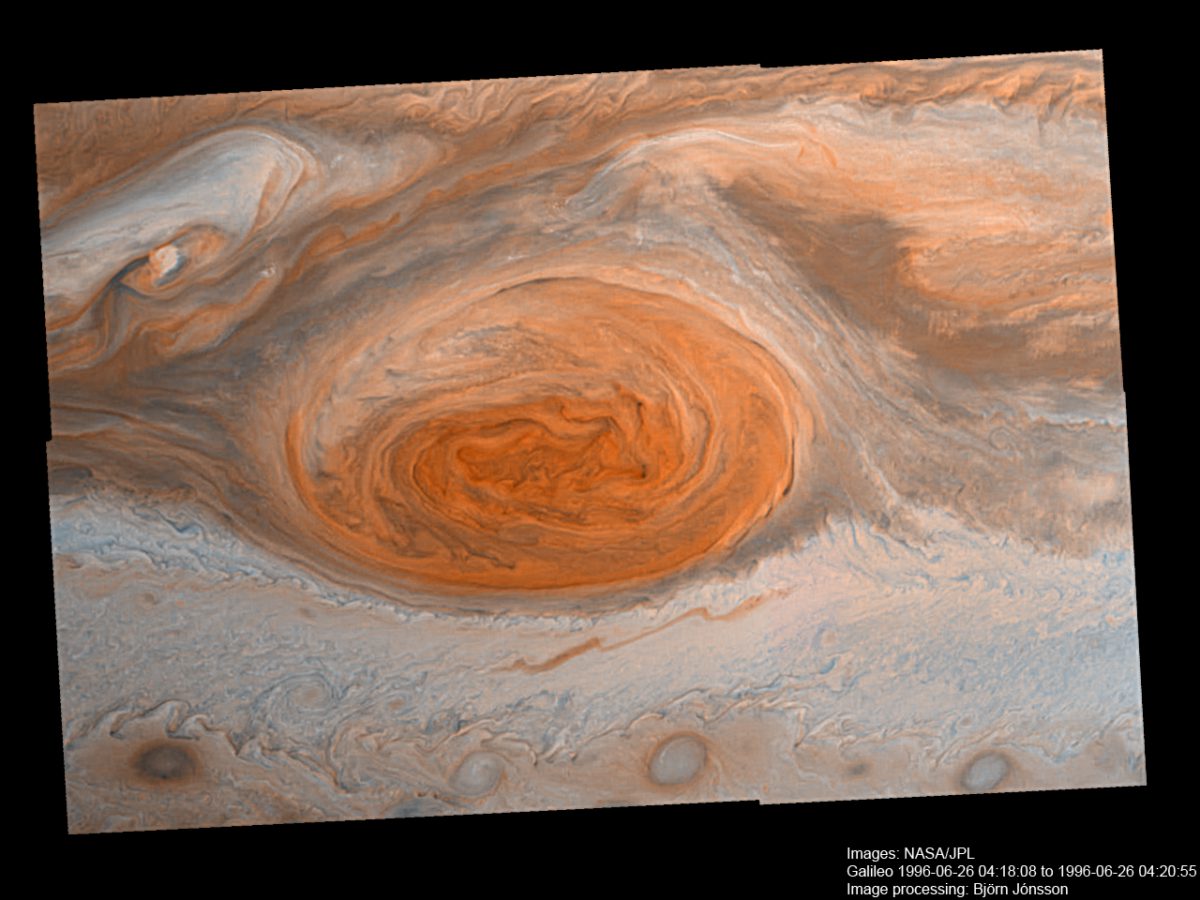
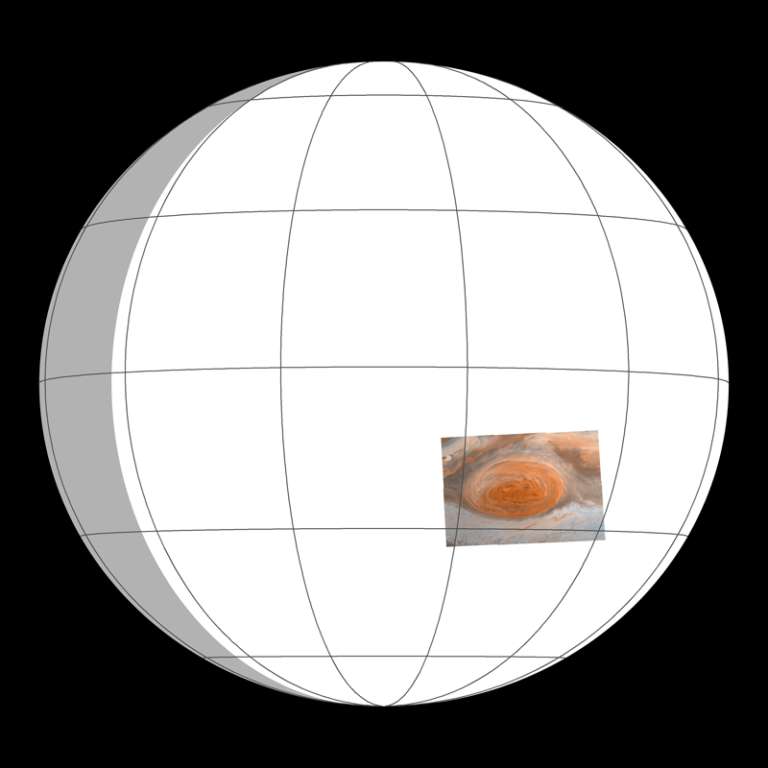

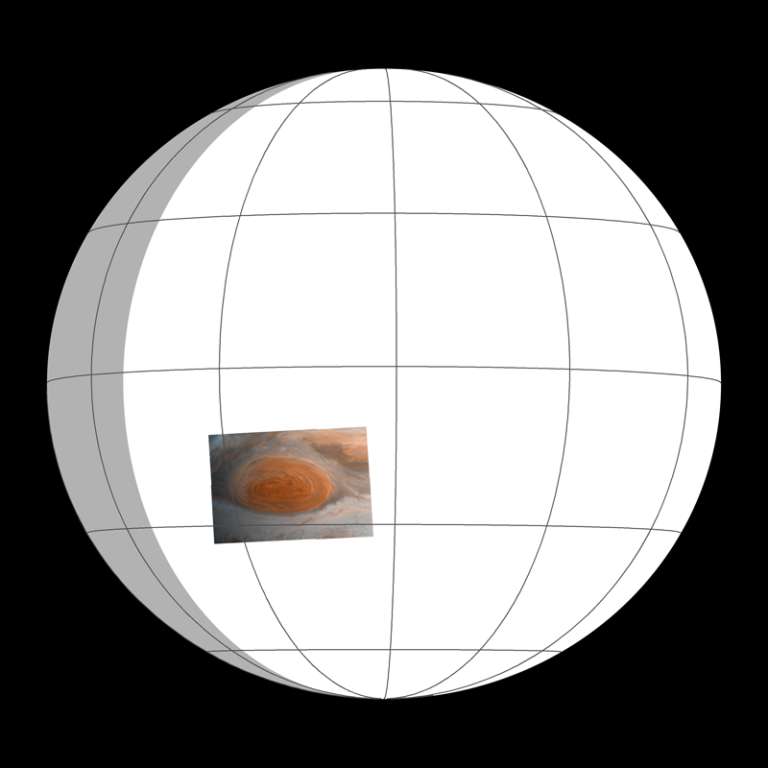
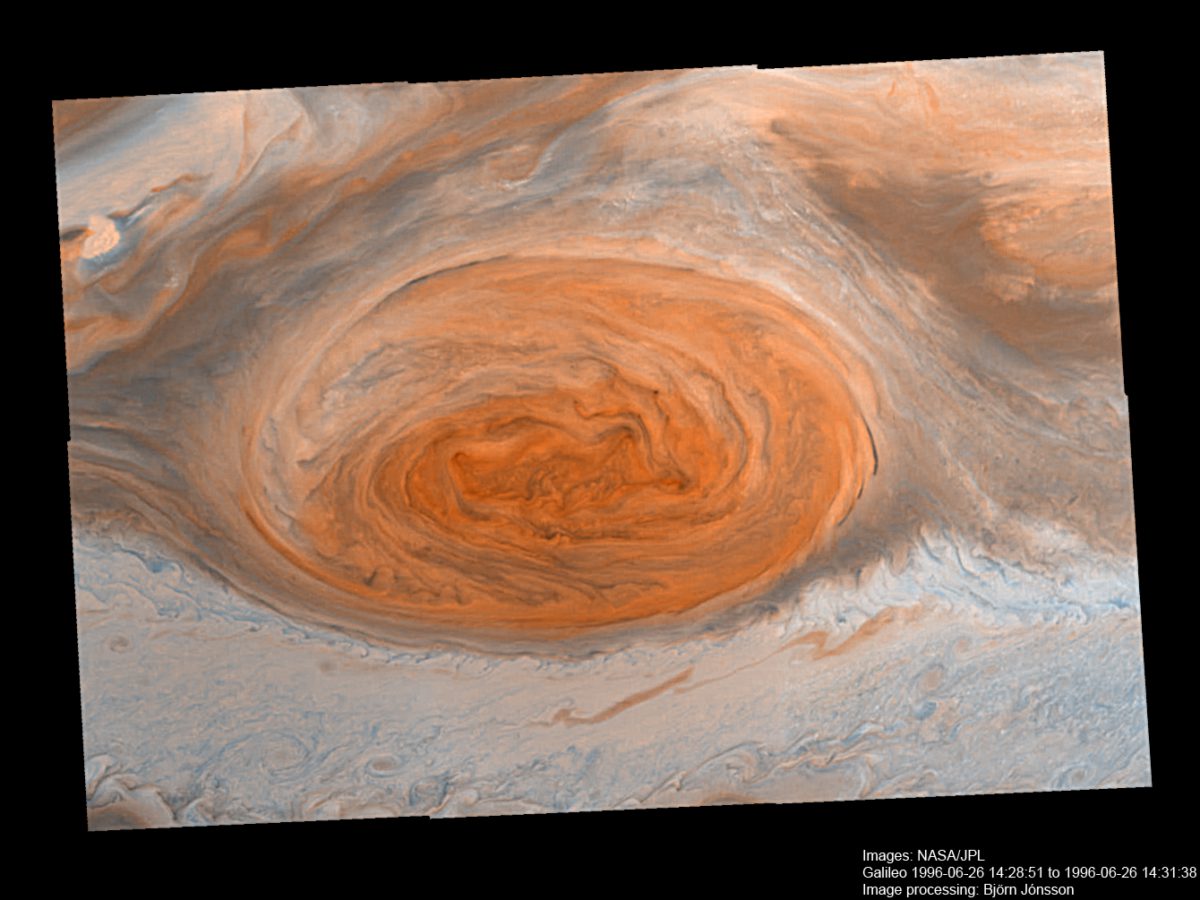
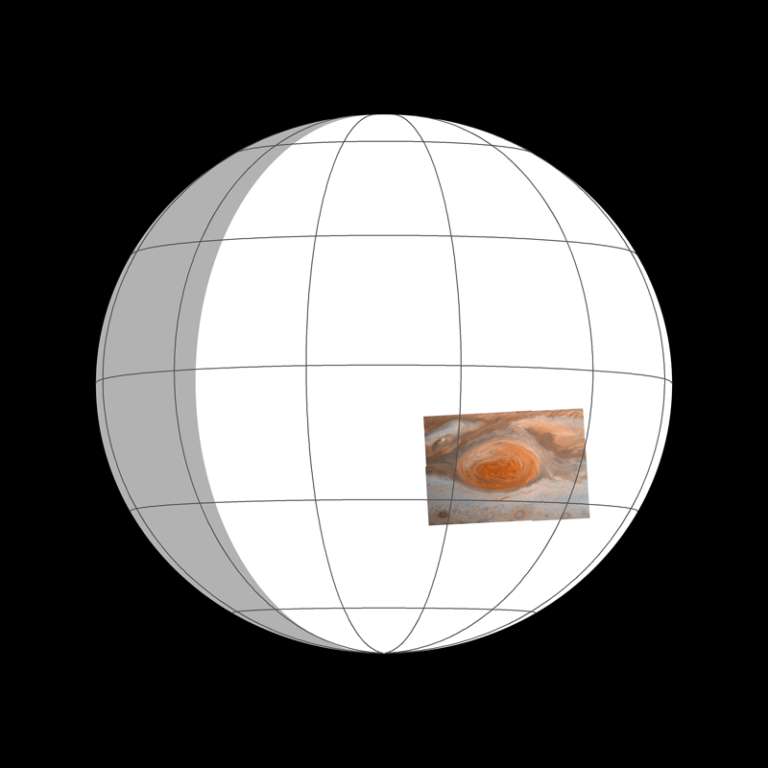
In the first image, Galileo was 1.8 million km from Jupiter and the resolution of the original images is ~36 km/pixel. In the other two cases, Galileo was 1.5 million km from Jupiter and the original image resolution ~30 km/pixel. The mosaics above are slightly oversampled.
The third image has been seen earlier in "official versions"; a true color image can be seen here. However, this seems to be a "quick" version since the color channels are not properly aligned and faint seams are also visible. There is also a well-known color version composed from three near-IR wavelengths that can be seen here. It's of higher quality than the true color version.
As indicated above, color and contrast are exaggerated in the above images. Here is a version of the first image with approximately true color and contrast:
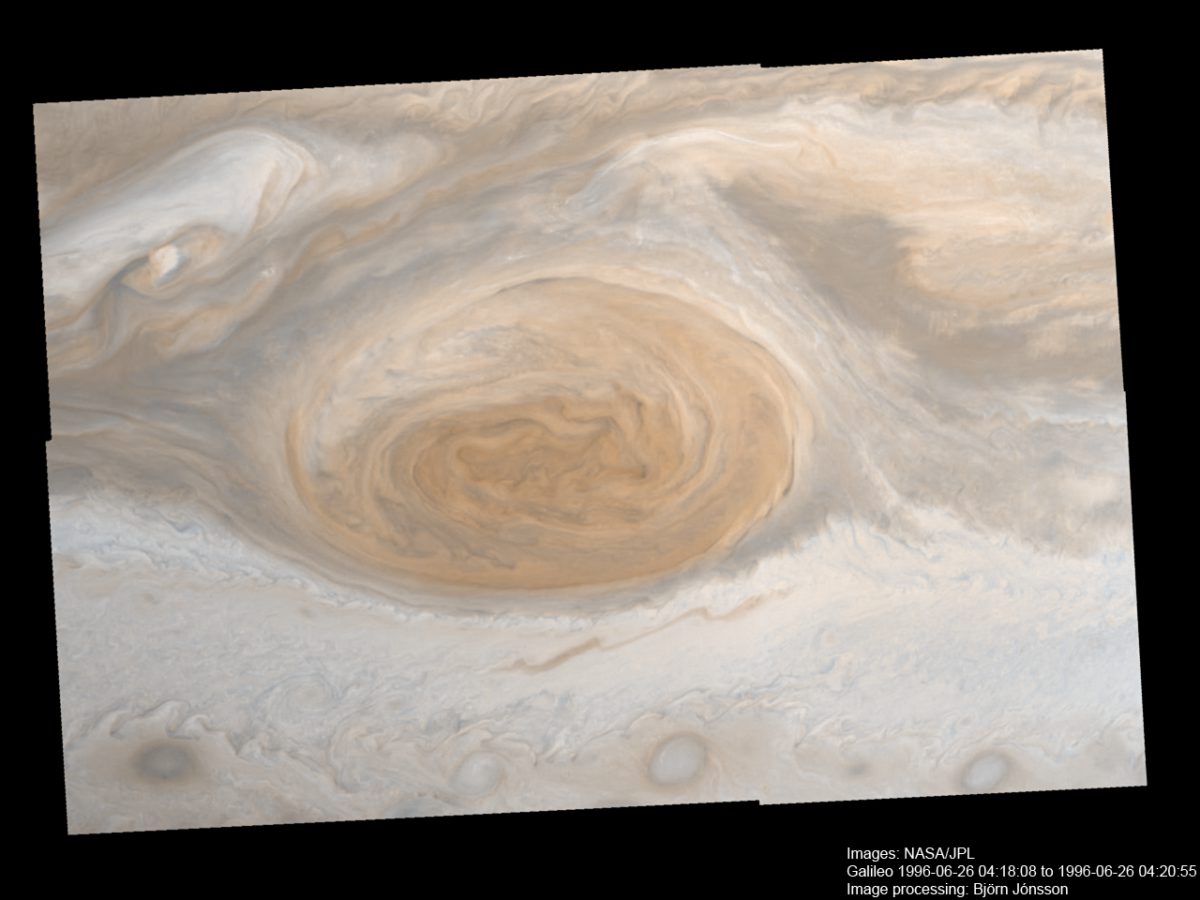
The processing of these images is comparable to the processing of my earlier Voyager mosaics. I started by refining the pointing information and then reprojected everything to simple cylindrical projection. I then created synthetic green maps, used these to create full color maps, and then mosaicked the 3x2 color maps into one seamless map. I then rendered the resulting maps to show the GRS from Galileo's vantage point.
There are more gems hidden in the Galileo Jupiter data but these are the best ones of the GRS—and possibly the most spectacular Jupiter images obtained throughout the entire mission.
As usual I got rather frustrated when processing these images. I always inevitably start thinking of what the Galileo mission would have been like had the HGA worked. There would probably have been mosaics of the GRS like these (but without compression artifacts) from many/most of Galileo's 30+ orbits, but instead I know of only three orbits with images of the GRS (there might be more—but not a lot). And the images above are the best ones.
Support our core enterprises
Your support powers our mission to explore worlds, find life, and defend Earth. You make all the difference when you make a gift. Give today!
Donate

 Explore Worlds
Explore Worlds Find Life
Find Life Defend Earth
Defend Earth

